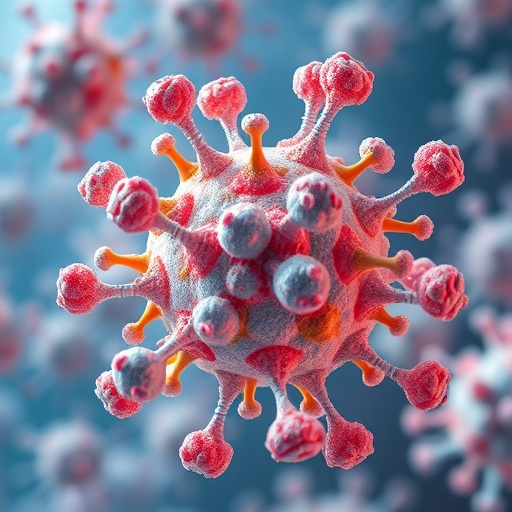
In the intricate world of cellular biology, mitochondria stand as vital powerhouses, orchestrating the energy production essential for life. These microscopic organelles fuel the biochemical engines of our cells, sustaining processes that underpin everything from muscle contraction to neural activity. Yet, despite decades of research, the full complexity of mitochondrial regulation continues to unfold, revealing layers of molecular interactions that are only now becoming visible. A groundbreaking study from the Salk Institute shines new light on this intricate landscape by unveiling the key contribution of a newly discovered microprotein, termed SLC35A4-MP, to mitochondrial structure and function within brown adipose tissue. This discovery not only challenges long-held dogmas in molecular genetics but also opens promising avenues for therapeutic strategies targeting metabolic diseases.
Mitochondria are dynamic organelles, crucial for metabolic homeostasis and energy balance. Their integrity and functionality depend on a finely tuned network of proteins that maintain their structural architecture and regulate metabolic responses to environmental stimuli. The newly identified microprotein SLC35A4-MP was first characterized in 2024 when researchers decoded its genetic sequence hidden within an upstream open reading frame (uORF) of messenger RNA (mRNA). Contrary to the traditional understanding that each mRNA codes for a single protein, these uORFs were previously dismissed as noncoding segments. However, advances in ribosome profiling and proteogenomic techniques have revealed that such regions can indeed encode small yet functionally indispensable microproteins.
The Salk Institute team focused on the functional validation of SLC35A4-MP in vivo, employing sophisticated genetic knockout models in mice. By eliminating the gene encoding SLC35A4-MP specifically in brown adipose tissue—a metabolically highly active fat depot responsible for thermogenesis—the researchers probed the physiological impact of this microprotein. Their findings exposed a profound disruption in mitochondrial morphology and function, accompanied by impaired adaptive thermogenesis during cold stress and suboptimal lipid metabolism under dietary challenges.
Microscopic examination of brown fat cells lacking SLC35A4-MP revealed mitochondria exhibiting abnormal enlargement, structural disorganization, and signs of inflammation. These organelles appeared swollen, with compromised cristae—the internal folds integral for efficient oxidative phosphorylation. Such morphological alterations were accompanied by a cascade of cellular remodeling events, indicative of metabolic distress and inflammation. This cellular milieu mirrors pathological conditions often observed in obesity and age-related metabolic disorders, suggesting that the loss of this microprotein mirrors disease-like metabolic dysfunction in vivo.
On the molecular level, the absence of SLC35A4-MP disrupted key pathways involved in mitochondrial bioenergetics and lipid handling. Brown adipocytes without this microprotein could not effectively ramp up energy expenditure in response to cold exposure, a hallmark of healthy mitochondrial adaptation. This failure highlights the critical regulatory role of SLC35A4-MP in facilitating metabolic flexibility through maintaining mitochondrial integrity. The data suggest that SLC35A4-MP may interact with structural components of the mitochondrial membrane or signaling proteins that govern mitochondrial dynamics, thereby preserving organelle function during metabolic stress.
This study overturns prior dismissals of microproteins as mere genetic noise, placing them firmly as central players in cellular physiology. The discovery of SLC35A4-MP’s function extends beyond brown fat biology; mitochondria are omnipresent in all cell types, rendering this microprotein a likely candidate for broader systemic influence. Consequently, SLC35A4-MP and similar microproteins represent a largely untapped reservoir of potential targets for treating metabolic diseases where mitochondrial dysfunction is a driving force, such as type 2 diabetes, obesity, and age-associated decline.
Technical advances in genomics and proteomics have propelled the identification of microproteins encoded within previously overlooked open reading frames. These tiny proteins, often fewer than 100 amino acids, are now recognized as critical modulators of diverse biological processes. The work at the Salk Institute exemplifies the scientific shift from gross annotation errors to appreciating the sophistication hidden in the genome’s so-called “dark matter”. The study employed rigorous biochemical assays combined with in vivo physiological testing, establishing a direct causal link between microprotein expression and mitochondrial health.
The functional exploration of SLC35A4-MP in the context of metabolic stress conditions—such as cold exposure and high-fat diet—provides a valuable model for understanding how cells maintain energy homeostasis. Brown adipose tissue acts as a metabolic furnace that dissipates excess calories as heat, largely mediated by mitochondrial uncoupling. Disruption of its function through loss of SLC35A4-MP portrays a compelling scenario where microprotein loss leads to a cascade of bioenergetic failure, cellular inflammation, and systemic metabolic impairments.
Importantly, this research brings to the forefront the notion that many human diseases may involve previously uncharacterized microproteins. Their small size has traditionally made them elusive to conventional proteomic approaches, underscoring the necessity of innovative methodologies to decode their presence and role. As more microproteins are cataloged and functionally validated, biomedical science stands at the threshold of revealing a new layer of molecular medicine that could redefine diagnostics and therapeutics for a variety of conditions.
The excitement surrounding this discovery is palpable within the scientific community, as it challenges the one-gene-one-protein paradigm and expands our understanding of genome complexity. The researchers at Salk express optimism that their findings will catalyze further studies into the microproteome, illuminating the diverse physiological relevance of these small proteins. Their hope is that such knowledge will ultimately translate into novel treatments aimed at bolstering mitochondrial function and combating metabolic and age-related diseases.
In conclusion, the identification and characterization of SLC35A4-MP as a critical regulator of mitochondrial structure and adaptive metabolism in brown fat herald a paradigm shift in mitochondrial biology. This breakthrough underscores the profound impact of microproteins, previously obscured within the genome’s “dark” sequences, in governing essential cellular processes. As research continues to unravel the complexities of these miniature proteins, the landscape of molecular biology and metabolic disease treatment is poised for revolutionary advances.
Subject of Research:
Microprotein SLC35A4-MP’s role in mitochondrial structure and metabolic regulation within brown adipose tissue of mice.
Article Title:
Abnormal mitochondrial structure and function in brown adipose tissue of SLC35A4-MP knockout mice
News Publication Date:
29-Aug-2025
Web References:
https://www.science.org/doi/10.1126/sciadv.ads7381
https://www.salk.edu/news-release/new-ai-tool-illuminates-dark-side-of-the-human-genome/
https://www.salk.edu/news-release/finding-microproteins-to-treat-obesity-and-metabolic-disorders/
References:
Rocha, A., Pinto, A., Diedrich, J., Shan, H., Vieira de Souza, E., Vaughan, J., Foster, M., Schmedt, C., Perksin, G., Ellisman, M., Plucińska, K., Cohen, P., Sampath, S., & Saghatelian, A. (2025). Abnormal mitochondrial structure and function in brown adipose tissue of SLC35A4-MP knockout mice. Science Advances. https://doi.org/10.1126/sciadv.ads7381
Image Credits:
Salk Institute
Tags: aging and mitochondrial healthbrown adipose tissue researchcombating obesity with microproteinsenergy production in cellsmetabolic disease therapiesmetabolic homeostasis strategiesmicroproteins in mitochondrial functionmitochondrial structure and functionmolecular genetics breakthroughsSLC35A4-MP discoverytherapeutic approaches for mitochondrial disordersuORF and protein coding



